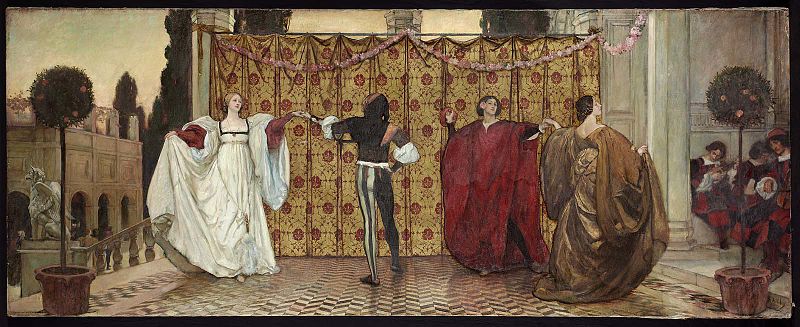Byrd, Pavan and Galliard a6
If you liked the galliard from last week’s pick, you may want to dig a little deeper into the late Renaissance court dances. The galliard was frequently paired with a pavan as in this week’s selection by the English composer William Byrd (1543-1623).

Like the galliard, the pavan originated in Italy and enjoyed wide popularity in the 16th century. Its name probably comes from an adjective referring to the town of Padua. It had a symmetrical structure of two, three, or four strains (each played twice). It was often followed by a salterello in fast triple meter, sometimes containing similar melodic materials. Northern Europe, however, tended to favor the galliard—another lively dance in triple meter.
The pavan would serve as a stately procession with very simple steps, almost always in duple meter. Writings from the time describe it as suitable for a wedding march or occasions when musicians would lead a procession of some notable guild.
As the pavan waned in popularity toward the end of the 16th century, English composers took up the form, giving it a more elaborate character. You find it among the works of the big names from the Elizabethan era (Gibbons, Dowland, Byrd, and Morley).
Morley described it as “a kind of staid music for grave dancing.” The titles also frequently indicate somber occasions: Dowland’s Lachrime, or Seaven Teares Figured in Seaven Passionate Pavans; Bull’s Melancholy Pavan; Philips’s Pavan dolorosa. Some titles make reference to a funeral or as a memorial.
Byrd is perhaps the most prominent in a crowded field of significant composers during Elizabeth’s reign (1558-1603). He secured an early position as organist and choirmaster at Lincoln Cathedral and went on to become Elizabeth’s chief organist and composer.



